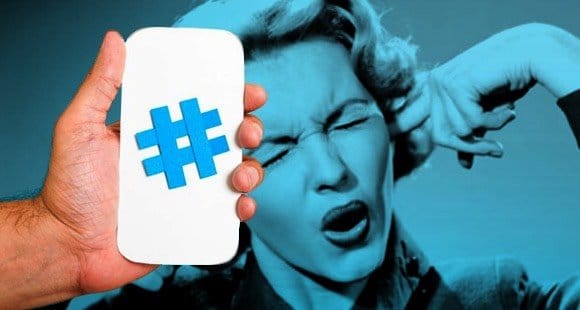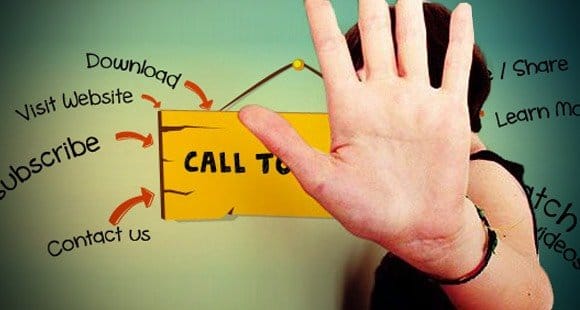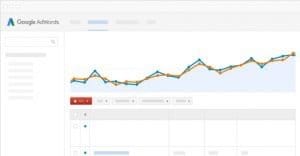Use Social Media Advertising Without Being Obnoxious

Social media is something of a double-edged sword. On one hand, it has fantastic marketing potential. Never before in the history of marketing has it been so easy and so inexpensive to contact so many people in a short amount of time. If the message you deliver to those people is one of value, you can pull in an incredible amount of conversion traffic. On the other hand, it’s like walking a tightrope. To one side, you have the steep fall that comes from being too annoying to attract and keep users. On the other side, you have the equally steep fall of a public meltdown or insensitive comment that causes a viral explosion of negative press you may never live down. How can you avoid the pitfalls and walk the tightrope successfully?
Twitter has a strict limit on the amount of space you can use for a given message. Taking up too much of that space with hashtags is a grievous offense. Hashtags on their own typically provide little value, unless they’re used specifically for comedic effect, which you should do only rarely. The ideal hashtag should be virtually invisible, used more to categorized the tweet and make it available to a certain community than to be valuable in itself. You should also always make sure to search any hashtag before you use it, just to know what’s already there. Don’t try to hijack an active hashtag with your own ad campaign; create a new branded hashtag.
In stark contrast to Twitter, Facebook’s implementation of hashtags is significantly worse. For one thing, the mere presence of hashtags on Facebook dramatically lowers engagement. For another thing, hashtags are severely limited. On Twitter, when you use a hashtag, anyone at all on the platform can click through that hashtag and see your tweet and any other indexed tweet with that tag. On the other hand, on Facebook, that audience is stripped down. You’ll only see results on Facebook if the other people using that tag are on your friends list or in your circles of acquaintances. If they’re too far out of the way, you won’t see their posts. It dramatically hampers the utility of those tags.
Don’t Post Personal Information
Social media is highly social, but that doesn’t mean it’s highly personal. If your social media manager is posting about the intestinal distress they had after breakfast, or the antics of the office cat, they’re straying well into the world of too much information. That’s one kind of personal information. Another kind is anything that your users give to you in confidence. If a user comes to you with a problem via private message, don’t out them in public and post the answer on your wall. Treat them with more respect than such actions convey.
Always Be Positive
Maintaining a positive attitude is important for a brand on social media. Users are less likely to click your links or convert when you make them feel bad, even if you’re trying to guilt them into clicking. Trying to manipulate the emotions of your users is bad enough, but doing it through emotional blackmail will destroy your audience. There’s enough depressing news in the world today, you don’t need to add to that burden. Consider the emotional impact of anything you’re going to post, and think twice about publishing anything with a negative slant.
Avoid Jargon and Buzzwords
The problem with much of the brand communication that happens today is the obfuscation of the core values of content through the application of a predominantly multisyllabic vocabulary backed by a dearth of meaning. Or, to put that in plain English; don’t use long words, complex phrases, jargon and buzzwords to hide that your content has to value. The more you hide it, the more obvious it becomes when it’s discovered.
Favor Honesty Over Bragging
Honesty is the best policy. Honesty helps users trust you, when bragging and inflating your own worth does not. If you promise the world and only deliver a box of dirt, you lose a lot of credibility and you gain a lot of negative word of mouth. On the other hand, if you present yourself honestly and go above and beyond the call of duty, you end up impressing your users and gaining a positive reputation.
Don’t Post Too Often
How often should you post on each social media site you use? The answer varies somewhat depending on your audience, their engagement, their size and the priority of the news you have to say. It also varies depending on the platform. Twitter, for example, can support tweeting as often as hourly, if you have something to say. Facebook should be limited to 1-2 posts per day. LinkedIn and Google+ are in similar positions, with less content of higher quality reigning over more content of lower quality. Instagram you can post more often, though not as often as Twitter, and not with direct marketing. Adjust these numbers as you experiment with your audience.
Don’t Avoid Posting
If you forget to post, post when you can and keep up a schedule. If you find yourself lacking content or you’re stuck between social media managers with no one to run your profiles, come up with something to post anyway, just to keep a regular schedule. The schedule is almost more important than the content, with regards to keeping and growing an audience. The longer your audience goes without seeing your posts, the less likely they will see them later, let alone seek them out.
Keep CTAs Rare
When you’re too promotional, you’re going to see audience backlash. It’s okay to advertise when you’ve posted a new blog post or launched a new product. It’s not okay to make every single Facebook post a call to like a page, follow a blog, buy a product or leave a review. You alienate a large part of your audience with each promotional message. Remember, social media is all about building social relationships with your users; it’s not about selling to them directly as if the news feed were an extended commercial starring your brand.
Respond and Engage
This goes hand in hand with the above point. Your users are on social media so they can be social. This means they are going to want to treat your brand more like a person than a faceless corporation. Encourage that impression. When a user posts a comment, respond to that comment. When a user compliments you, thank them. When a uses posts a negative review, reach out to soothe the pain. Treat your customers as people and they’ll reward you in turn.
Minimize Automation
About the only form of automation you should use on social media is post scheduling. You should avoid automatic refollowing, reciprocal linking, comment responses or anything else. Avoid anything that makes your profiles look like they’re run by robots. Automated marketing is a huge turn-off.
 ContentPowered.com
ContentPowered.com






